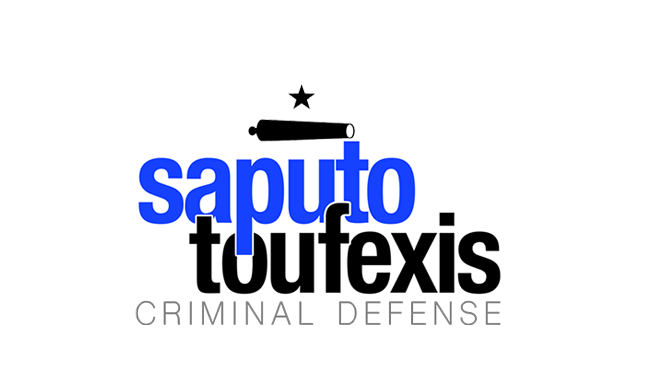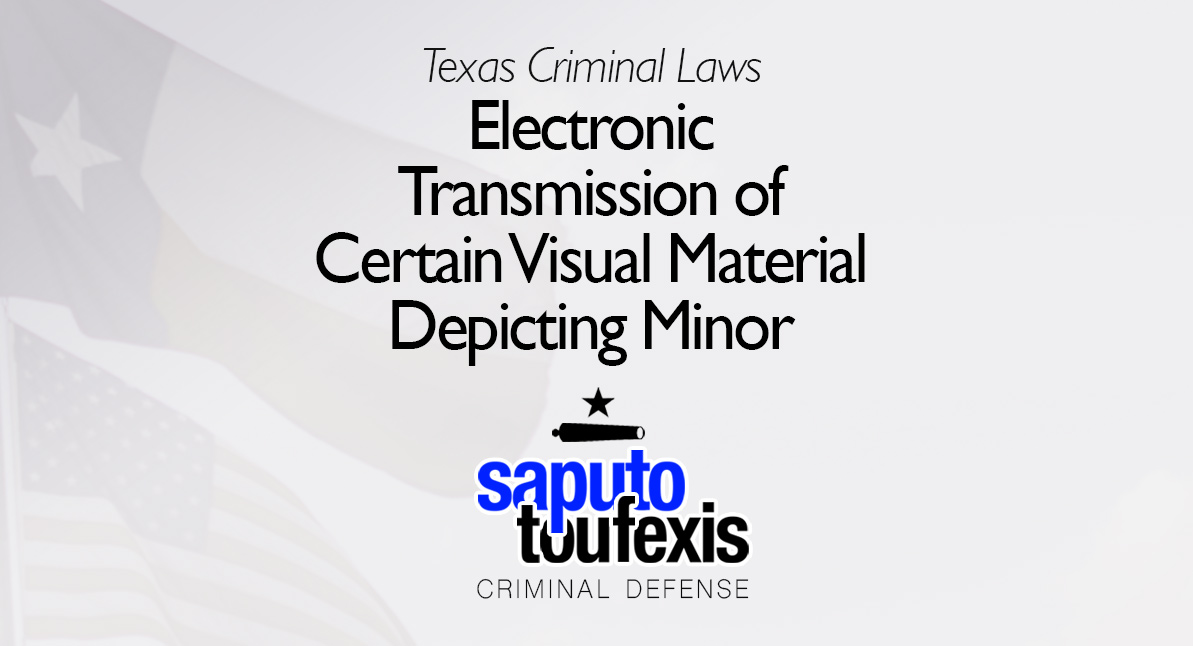The Texas Electronic Transmission of Certain Visual Material Depicting Minor law applies strictly to people under 18 years old and allows police to arrest you if they believe you are a minor and, in essence, you have electronic images or video depicting minors engaging in sexual conduct or you helped spread that kind of material.
FAQs about the
Electronic Transmission of Certain Visual Material Depicting Minor law in Texas
- What is the current Texas law about Electronic Transmission of Certain Visual Material Depicting Minor?
- What visual material is covered under this law?
- What if I deleted the pictures or video as soon as I received it? What if I was dating the person in the pictures or video?
- How can I be charged with an Electronic Transmission of Certain Visual Material Depicting Minor offense in Texas?
- What is the statute of limitation for Electronic Transmission of Certain Visual Material Depicting Minor in Texas?
- What is the penalty for a Texas Electronic Transmission of Certain Visual Material Depicting Minor offense?
- Can you get probation for Electronic Transmission of Certain Visual Material Depicting Minor in Texas?
- Do I have to register as a sex offender in Texas if guilty of Electronic Transmission of Certain Visual Material Depicting Minor?
- What level of crime is Electronic Transmission of Certain Visual Material Depicting Minor in Texas?
This statute enables state prosecuting attorneys to target kids and teenagers who share what ultimately amounts to child pornography without coming down on the kids as harshly as a possession of child porn prosecution. Young people who engage in “sexting” can be held criminally liable under this law. People over 18 years old who engage in the same sexting with minors would be prosecuted under much harsher laws like Possession or Promotion of Child Pornography, Sexual Performance by a Child or Online Solicitation of a Minor.
Have you been charged with Electronic Transmission of Certain Visual Material Depicting Minor? Contact us today to discuss legal representation.
or Text or Call (888) 239-9305
The Texas legislature codified this criminal offense in Texas Penal Code Section 43.261. The law was updated in 2023 by expanding the definition of the visual materials (which seems to be targeted at deepfake child porn) to which the law applies.
The Penal Code classifies the Texas Electronic Transmission of Certain Visual Material Depicting Minor law under Title 9 “Offenses Against Public Order and Decency,” Chapter 43 “Public Indecency.” These “public indecency” crimes are sex crimes, but they are not of a violent or assaultive nature. Learn more about the Texas offense of Electronic Transmission of Certain Visual Material Depicting Minor below.
What is the current Texas law about Electronic Transmission of Certain Visual Material Depicting Minor?
Texas law currently defines the offense of Electronic Transmission of Certain Visual Material Depicting Minor in Penal Code Section §43.261 as follows:[1]
(b) A person who is a minor commits an offense if the person intentionally or knowingly:
(1) by electronic means promotes to another minor visual material depicting a minor, including the actor, engaging in sexual conduct, if the actor produced the visual material or knows that another minor produced the visual material; or
(2) possesses in an electronic format visual material depicting another minor engaging in sexual conduct, if the actor produced the visual material or knows that another minor produced the visual material.
What visual material is covered under this law?
In 2023, the Texas legislature added a subsection (b-1) to this law that specifies that visual material includes depictions of a child “(1) who is recognizable as an actual person by the person’s face, likeness, or other distinguishing characteristic, such as a unique birthmark or other recognizable feature; and (2) whose image as a child younger than 18 years of age was used in creating, adapting, or modifying the visual material, including computer-generated visual material that was created, adapted, or modified using an artificial intelligence application or other computer software.”[2]
What if I deleted the pictures or video as soon as I received it? What if I was dating the person in the pictures or video?
There are a few statutory defenses (meaning that these are available to use in addition to other defenses) listed in the statute. There is an affirmative defense available that would allow your lawyer to keep you from being convicted if you can show that the material involved only yourself or your boyfriend or girlfriend and was kept or shared only between yourself and your boyfriend or girlfriend.[3]
The statute also lists a defense to prosecution for a situation where you did not produce or solicit the images, they were sent to you by another minor and you destroyed the images shortly after receiving them.[4]
How can I be charged with an Electronic Transmission of Certain Visual Material Depicting Minor offense in Texas?
You can be charged with Electronic Transmission of Certain Visual Material Depicting Minor if the state’s attorneys believe that each of the elements of 43.261(b) as described in the section above have been met.
What is the statute of limitation for Electronic Transmission of Certain Visual Material Depicting Minor in Texas?
As a misdemeanor, Electronic Transmission of Certain Visual Material Depicting Minor charges have a two-year limitations period.[5]
What is the penalty for a Texas Electronic Transmission of Certain Visual Material Depicting Minor offense?
Unless one of the enhancements described below applies, a conviction for Electronic Transmission of Certain Visual Material Depicting Minor in Texas is punished as a Class C misdemeanor,[6] with a maximum possible fine under Texas state law of up to $500.
If you are convicted of Electronic Transmission of Certain Visual Material Depicting Minor, and the state’s attorneys prove at trial that you have been convicted another time in the past of any version of the Electronic Transmission of Certain Visual Material Depicting Minor offfense, then the offense is classified as a Class B misdemeanor,[7] with a maximum possible fine under Texas state law of up to $2,000 and jail time of up to 180 days.
If you have been convicted two or more times of any version of the Electronic Transmission of Certain Visual Material Depicting Minor offense, then a conviction for your third offense is punished as a Class A misdemeanor,[8] with a maximum possible fine under Texas state law of up to $4,000 and jail time of up to one year.
If you are convicted of the “promotion” version of this offense, and the state’s attorneys prove at trial that you promoted the visual material with the intent to harass, torment, or abuse another person, then, even if it’s your first offense, the conviction is classified as a Class B misdemeanor,[9] with a maximum possible fine under Texas state law of up to $2,000 and jail time of up to 180 days. Any second or subsequent offense of this type is punished as a Class A misdemeanor.[10]
Can you get probation for Electronic Transmission of Certain Visual Material Depicting Minor in Texas?
The Texas Code of Criminal Procedure allows both judges and juries to grant probation for Electronic Transmission of Certain Visual Material Depicting Minor, and judges are also allowed to accept deferred adjudication plea deals.[11]
Note, however, that judges may not grant community supervision after a conviction if (1) the defendant used or exhibited a deadly weapon during the commission of the felony or immediate flight thereafter and (2) the defendant used or exhibited the deadly weapon himself or was a party to the offense and knew that a deadly weapon would be used or exhibited.[12]
Do I have to register as a sex offender in Texas if guilty of Electronic Transmission of Certain Visual Material Depicting Minor?
The Electronic Transmission of Certain Visual Material Depicting Minor offense does not appear on the list of offenses requiring registration under Chapter 62 of the Texas Code of Criminal Procedure.[13]
However, the legislature can add this offense to the list at any time. If that happens, people convicted of Electronic Transmission of Certain Visual Material Depicting Minor would have to register, even if the offense did not appear on the list at the time they accepted a deferred adjudication plea (even if later dismissed), pled guilty or were founty guilty.
What level of crime is Electronic Transmission of Certain Visual Material Depicting Minor in Texas?
The Penal Code classifies Electronic Transmission of Certain Visual Material Depicting Minor as a Class A, B, or C misdemeanor, depending on the circumstances.
Learn more about the penalty range for this offense in the section above.
Legal References:
^1. Texas Penal Code §43.261. This law is current as of 2024.^2. Texas Penal Code §43.261(b-1), as enacted by HB 2700, 88th Legislature, Section 2^3. Texas Penal Code §43.261(e)^4. Texas Penal Code §43.261(f)^5. See Code of Criminal Procedure 12.02(a)^6. Texas Penal Code §43.261(c) and (d)^7. Texas Penal Code §43.261(c)(1)(B) and (d)(1)^8. Texas Penal Code §43.261(c)(2)(B) and (d)(2)^9. Texas Penal Code §43.261(c)(1)(A)^10. Texas Penal Code §43.261(c)(2)(A)^11. See Chapter 42, Texas Code of Criminal Procedure, Art. 42A.054, Art. 42A.056, Art. 42A.102^12 Art. 42A.054(b), Texas Code of Criminal Procedure^13. Code of Criminal Procedure, Article 62.001










